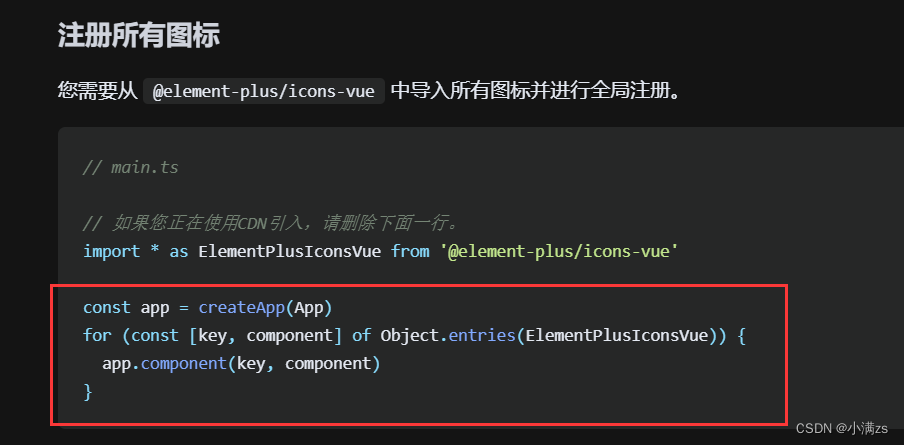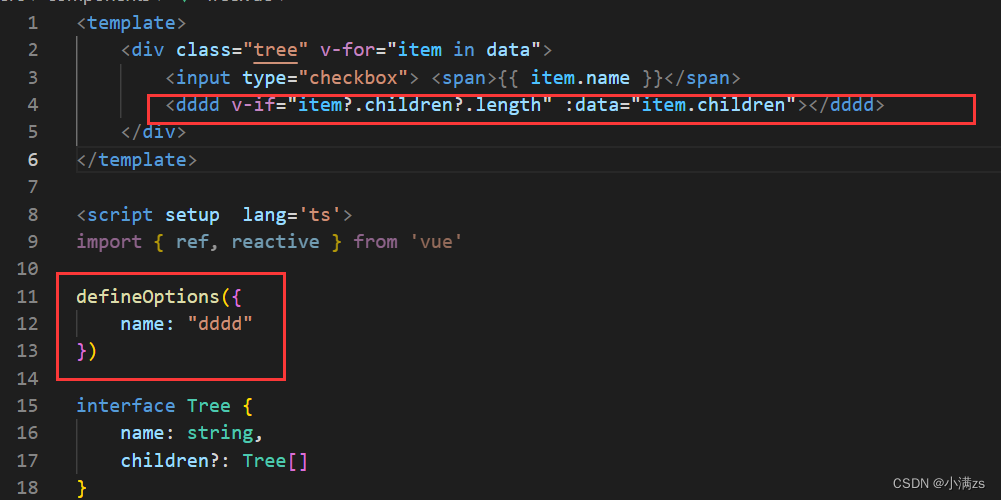配置全局组件
例如组件使用频率非常高(table,Input,button,等)这些组件 几乎每个页面都在使用便可以封装成全局组件
案例------我这儿封装一个Card组件想在任何地方去使用
<template>
<div class="card">
<div class="card-header">
<div>标题</div>
<div>副标题</div>
<div v-if='content' class="card-content">
{{content}}
</template>
<script setup lang="ts">
type Props = {
content:string
defineProps<Props>()
</script>
<style scoped lang='less'>
@border:#ccc;
.card{
width: 300px;
border: 1px solid @border;
border-radius: 3px;
&:hover{
box-shadow:0 0 10px @border;
&-content{
padding: 10px;
&-header{
display: flex;
justify-content: space-between;
padding: 10px;
border-bottom: 1px solid @border;
</style>

使用方法
在main.ts 引入我们的组件跟随在createApp(App) 后面 切记不能放到mount 后面这是一个链式调用用
其次调用 component 第一个参数组件名称 第二个参数组件实例
import { createApp } from 'vue'
import App from './App.vue'
import './assets/css/reset/index.less'
import Card from './components/Card/index.vue'
createApp(App).component('Card',Card).mount('#app')
使用方法
直接在其他vue页面 立即使用即可 无需引入
<template>
<Card></Card>
</template>
批量注册全局组件
可以参考element ui 其实就是遍历一下然后通过 app.component 注册

配置局部组件
<template>
<div class="wraps">
<layout-menu :flag="flag" @on-click="getMenu" @on-toogle="getMenuItem" :data="menuList" class="wraps-left"></layout-menu>
<div class="wraps-right">
<layout-header> </layout-header>
<layout-main class="wraps-right-main"></layout-main>
</template>
<script setup lang="ts">
import { reactive,ref } from "vue";
import layoutHeader from "./Header.vue";
import layoutMenu from "./Menu.vue";
import layoutMain from "./Content.vue";
就是在一个组件内(A) 通过import 去引入别的组件(B) 称之为局部组件
应为B组件只能在A组件内使用 所以是局部组件
如果C组件想用B组件 就需要C组件也手动import 引入 B 组件
配置递归组件
原理跟我们写js递归是一样的 自己调用自己 通过一个条件来结束递归 否则导致内存泄漏
案例递归树
在父组件配置数据结构 数组对象格式 传给子组件
type TreeList = {
name: string;
icon?: string;
children?: TreeList[] | [];
const data = reactive<TreeList[]>([
name: "no.1",
children: [
name: "no.1-1",
children: [
name: "no.1-1-1",
name: "no.2",
children: [
name: "no.2-1",
name: "no.3",
]);
子组件接收值 第一个script
type TreeList = {
name: string;
icon?: string;
children?: TreeList[] | [];
type Props<T> = {
data?: T[] | [];
defineProps<Props<TreeList>>();
const clickItem = (item: TreeList) => {
console.log(item)
}
子组件增加一个script 定义组件名称为了 递归用
给我们的组件定义名称有好几种方式
1.在增加一个script 通过 export 添加name
<script lang="ts">
export default {
name:"TreeItem"
</script>
2.直接使用文件名当组件名

3.使用插件
unplugin-vue-macros/README-zh-CN.md at 722a80795a6c7558debf7c62fd5f57de70e0d0bf · sxzz/unplugin-vue-macros · GitHub
unplugin-vue-define-options
import DefineOptions from 'unplugin-vue-define-options/vite'
import Vue from '@vitejs/plugin-vue'
export default defineConfig({
plugins: [Vue(), DefineOptions()],
})
ts支持
"types": ["unplugin-vue-define-options/macros-global"],

template
TreeItem 其实就是当前组件 通过import 把自身又引入了一遍 如果他没有children 了就结束
<div style="margin-left:10px;" class="tree">
<div :key="index" v-for="(item,index) in data">
<div @click='clickItem(item)'>{{item.name}}
<TreeItem @on-click='clickItem' v-if='item?.children?.length' :data="item.children"></TreeItem>
Vue——05-01组件的基本使用、全局组件,局部组件、父子组件的区别、注册组件的语法糖以及分离写法
组件的基本使用、全局组件,局部组件、父子组件的区别、注册组件的语法糖以及分离写法
我明白了,vue父子组件生命周期顺序
vue的生命周期是官方公布的一系列的钩子,其实你只需要知道这些钩子在什么时候使用就可以了。但是有时你会发现,给子组件传值传一个复杂对象的时候,感觉明明传了,但子组件中遍历取值的还是会报错,甚至需要在子组件中去做if else之类的判断。
当然如果你给子组件设置props时加上合适的数据类型以及默认值,那么也没多大事儿,但是这是基于vue生命周期出现的问题,也许你了解了这个生命周期后,可以更优雅的解决这个问题噢。



